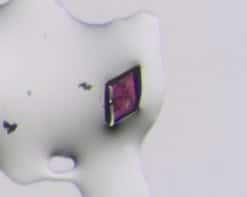
Although you might expect quantum phenomena and nanotechnology to walk hand in hand, a lot of superconductivity research has focused on material chemistry rather than material structures. However of late there seems to be an evident coupling between fundamental advances in superconductivity research and nanoscale science and technology – in particular 2D materials, as highlighted by the coinciding release of papers reporting superconductivity in graphene and 2D topologies in both Nature and Science this week.
The Nature paper focuses on graphene, which has previously been coerced into exhibiting superconducting properties through doping or a proximity effect when it is next to a superconducting material. As nanotechweb.org‘s freelance contributor Belle Dumé describes in her tech update, and Susan Curtis reports in Physics World, the superconducting properties in slightly twisted bilayer graphene reported this week arise in the absence of these approaches, and at record low carrier densities with the relatively high transition temperature of 1.7 K. (Superconductivity is one of the few fields where 1.7 degrees above absolute zero can be described as “high temperature”.)
The paper in Science reports on an iron-based superconductor – a type of material that can have really high transition temperatures (i.e. only a couple of a hundred degrees below freezing). Hong Ding, Shik Shin and colleagues in Japan, the US and China report 2D topologically superconducting surface states in FeTe1-xSex with a transition temperature of 14.5 K for x = 0.45. The significance of this observation is that it could host Majorana states for applications in topological quantum computing.
Of course certain nanostructures have been familiar features in superconductivity papers already, particularly when it comes to efforts towards applications using superconductivity. For example, a lot of these endeavours hinge in some way around some type of Josephson junction, often built from nanowires. However, big headlines marrying nanotechnology and superconductivity research have been arguably less common, and the recent rise in frequency of significant reports of superconductivity in nanostructures – from twisted bilayer graphene and 2D topological surface states in in FeTe1-xSex to stanene, superconductor-wrapped nanowires and nanorod powders to name a few from the past few weeks alone – hints at the two fields simultaneously reaching points where their symbiosis can be really fruitful.
There’s a full in-depth report on the superconductivity “pairing up with nanotechnology” on nanotechweb.org.



